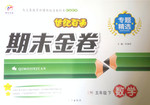题目内容
Little John invited his mother to attend his school’s first teacher-parent meeting. To the little boy’s __ , she said she would go. This __ be the first time that his classmates and teacher_____ his mother and he felt _____of her appearance. Although she was a beautiful woman, there was a severe scar that ____ nearly the entire right side of her face. The boy never wanted to ____ why or how she got the scar.
At the meeting, the people were ____ by the kindness and natural beauty of his mother ____ the scar, but the little boy was still embarrassed and_____ himself from everyone. He did, however, get within ____ of a conversation between his mother and his teacher.
The teacher asked _____, “How did you get the scar on your face?”
The mother replied, “____ my son was a baby, he was in a room that caught fire. Everyone was ____ afraid to go in because the fire was ____ , so I went in. As I was running toward his bed, I saw a long piece of wood coming down and I placed myself over him trying to protect him. I was knocked____ but fortunately, a fireman came in and saved both of us.” She ____ the burned side of her face. “This scar will be ____, but to this day, I have never ____what I did.”
At this point, the little boy came out running toward his mother with tears in his eyes. He held her in his arms and felt a great_____of the sacrifice(牺牲) that his mother had made for him. He held her hand _____for the rest of the day.
1.A. enjoyment B. disappointment C. surprise D. excitement
2.A. Would B. could C. should D. must
3.A. noticed B. greeted C. accepted D. met
4.A. Sick B. ashamed C. afraid D. tired
5.A. included B. passed C. covered D. shaded
6.A. talk about B. think about C. care about D. hear about
7.A. impressed B. surprised C. excited D. comforted
8.A. in sight of B. by means of C. by way of D. in spite of
9.A. hid B. protected C. separated D. escaped
10.A. understanding B. reminding C. hearing D. learning
11.A. carefully B. seriously C. nervously D. anxiously
12.A. As B. When C. Since D. While
13.A. so B. much C. quite D. too
14.A. out of control B. under control C. in control D. over control
15.A. helpless B. hopeless C. senseless D. useless
16.A. pointed B. showed C. wiped D. touched
17.A. ugly B. lasting C. serious D. frightening
18.A. forgot B. recognized C. considered D. regretted
19.A. honor B. sense C. happiness D. Pride
20.A. quietly B. slightly C. tightly D. Suddenly
 世纪百通期末金卷系列答案
世纪百通期末金卷系列答案
